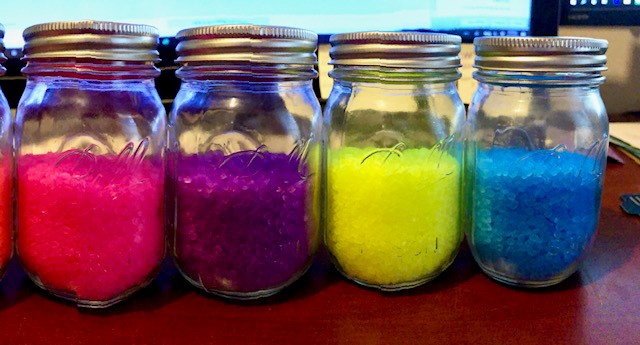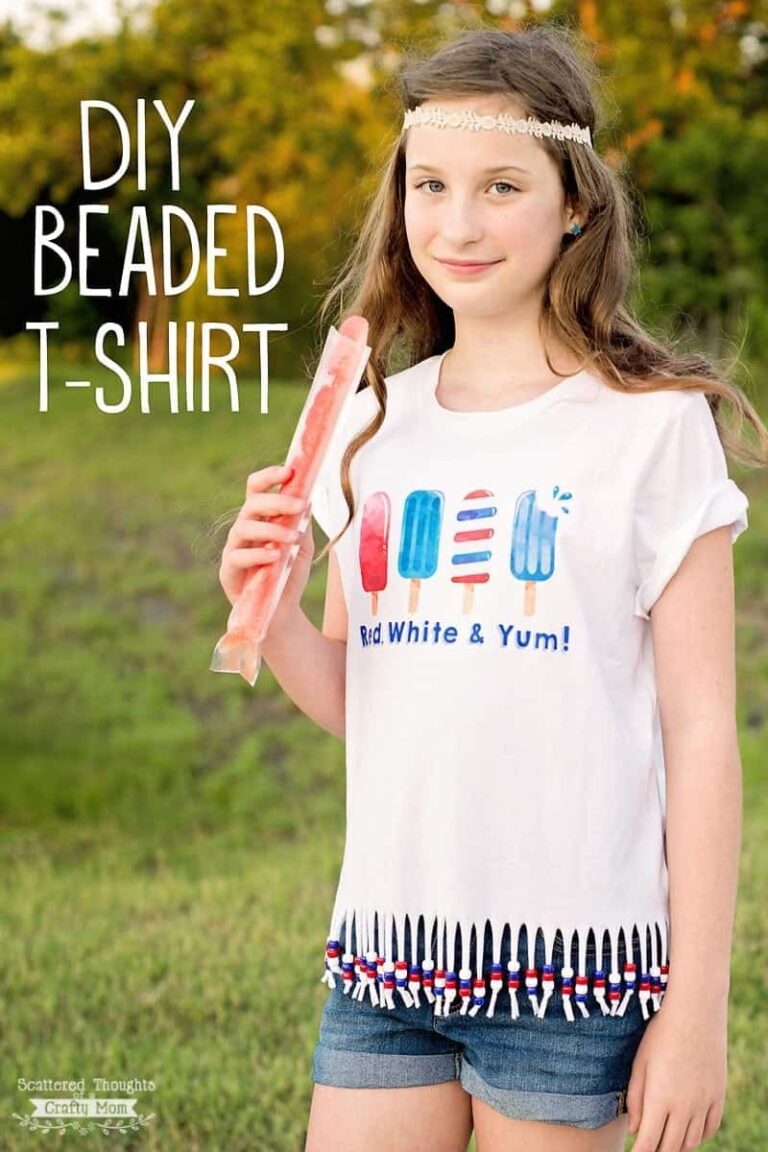To dye wooden beads, you will need: wood beads, a bowl, water, white vinegar, food coloring, and a skewer. First, mix one cup of water with one tablespoon of white vinegar in the bowl. Then, add several drops of food coloring to the mixture and stir.
Next, skewer the wood beads and dip them into the mixture. Allow them to sit in the dye for at least 15 minutes before removing them. Finally, rinse the beads off with water and allow them to dry completely.
- Get a small bowl and mix together 1 part water and 1 part vinegar
- Place your wooden beads into the bowl and let them soak for 30 minutes
- After 30 minutes, remove the beads from the bowl and rinse them off with clean water
- Now it’s time to dye the beads! Get a second small bowl and mix together your desired color of food coloring or liquid watercolor paint with 2 parts water
- Then, place the beads into this second bowl and let them soak until they reach your desired shade
- Once you’re happy with the color of your beads, remove them from the dye bath and rinse them off with clean water again
- Allow them to air dry completely before using in any projects
How to Dye Wooden Beads With Acrylic Paint
Wooden beads are a beautiful and natural way to add style to any jewelry or craft project. Acrylic paint is a wonderful medium for adding color to wood, and it can be used to create some truly stunning effects. Here’s how you can dye wooden beads with acrylic paint:
1. Begin by gathering your supplies. You’ll need some wooden beads, acrylic paint, a paintbrush, and some water.
2. Pour a small amount of paint onto a plate or palette.
Add a few drops of water to the paint and mix it together until it has a consistency that is slightly thinner than regular paint.
3. Dip your brush into the watered-down acrylic paint and then apply it to the bead. Work in small sections and be sure to evenly coat the bead with color.
You can add more or less water to the paint depending on how intense you want the color to be.
How to Dye Wooden Beads With Food Coloring
You can add a splash of color to your wooden beads with food coloring. It’s a quick and easy way to customize your beads, and the possibilities are endless! Here’s what you need to know to get started:
What You Need:
– Wooden beads (unfinished or painted)
– Food coloring (liquid or gel) – we used gel for brighter colors
– Bowl or container for dyeing
– Toothpicks or other small utensil for stirring/applying color
– Optional: clear sealer (spray or brush-on)
Instructions:
1. Begin by mixing your food coloring with water in a bowl or container, according to the ratio suggested on the food coloring package. We found that using less water resulted in brighter colors.
If you want multiple colors, mix each one separately.
2. Next, add your wooden beads to the bowl and stir them around until they’re fully coated with color. Depending on how deep of a hue you want, you can let them soak for a few minutes or hours.
Just be sure to check on them periodically so they don’t become too saturated.
3. When you’re happy with the color, remove the beads from the dye and allow them to dry completely on a paper towel or wire rack.
How to Dye Wood Beads Naturally
Wood beads are a beautiful and versatile craft supply, but sometimes you want them to be a little more colorful. Dyeing wood beads is a great way to add some extra interest to your projects, and it’s actually quite simple to do!
To start, gather up your supplies.
You will need wood beads (of course), natural dye powders or extracts, water, and vinegar. I like to use avocado pits for my dye, but you can also use things like turmeric, coffee grounds, or walnut hulls. If you want to get really creative, you can even mix different dyes together to create new colors.
Once you have your supplies ready, it’s time to start dying! The first step is to soak your beads in water for about an hour. This will help them absorb the dye better.
Next, mix together your chosen dye powder or extract with some water and vinegar. The ratio doesn’t have to be exact – just eyeball it until the mixture is the color you want it to be. Then, add your soaked beads to the mixture and stir everything around until the beads are evenly coated.
Let the dyed beads sit in the mixture for at least an hour – longer if you want a deeper color. Once they’ve had time to soak up the color, remove them from the mixture and let them dry on a clean cloth or paper towel. And that’s it!
Your newly dyed wood beads are ready to use in all sorts of crafts projects.
How to Dye Wooden Beads With Rit Dye
Dyeing wooden beads with Rit dye is a fun and easy way to add color to your jewelry or other craft projects. Here’s what you’ll need:
-Rit dye in the color of your choice (I used black)
-A plastic container large enough to fit all of the beads you want to dye (I used an old yogurt container)
-Wooden beads (I used about 50 small beads)
-A stir stick or other object for stirring the beads around in the dye bath
-Rubber gloves (optional, but recommended)
To start, mix your Rit dye with an equal amount of water in the plastic container. You can adjust the ratio of water to dye depending on how dark you want the final color to be.
Stir well to make sure the dye is completely dissolved. Then add your wooden beads and stir them around until they are completely coated with dye. If you’re using multiple colors, you can dyebath each color separately or do them all at once like I did.
Just be aware that if you do multiple colors at once, they may bleed into each other slightly.
Once the beads are fully saturated with color, remove them from the dyebath and rinse under warm water until the water runs clear. Pat dry with a towel and allow them to air dry completely before using them in your project.
And that’s it! Now you have beautiful colored wooden beads for whatever creation you desire!
How to Stain Wooden Beads With Coffee
If you’re looking to add a bit of rustic charm to your wooden beads, staining them with coffee is a great way to do it! This simple technique can be done in just a few minutes and gives your beads a beautiful, aged look. Here’s how to do it:
1. Begin by brewing a strong cup of coffee. You’ll need about ½ cup of coffee for every 1 ounce of beads that you’re staining.
2. Place your beads in a bowl or container and pour the coffee over them.
Let them soak for at least 30 minutes, stirring occasionally.
3. Drain the excess coffee from the beads and allow them to air dry completely. Once they’re dry, you can string them up into jewelry or use them however you’d like!

Credit: www.youtube.com
What Dye is Best for Wooden Beads?
There are a few things to consider when choosing a dye for wooden beads. The first is the type of wood the bead is made from. Different woods will accept dye differently, so it’s important to know what kind of wood your bead is before you start.
The second thing to consider is the color you want to achieve. Different dyes will produce different colors, so it’s important to choose one that will give you the hue you’re looking for. Finally, you’ll need to decide whether you want a permanent or temporary dye.
Permanent dyes are more difficult to remove if you don’t like the results, while temporary dyes can be easily removed with soap and water. With all of these factors in mind, let’s take a look at some of the most popular dyes for wooden beads:
1. Fiebing’s Leather Dye – This leather dye is popular for its wide range of colors and ability to produce a deep, rich color on wood beads.
It’s also fairly easy to find and relatively inexpensive.
2. Rit Dye – Rit Dye comes in both liquid and powder form, and offers a wide variety of colors as well. It’s less intense than Fiebing’s Leather Dye, so it might be a good choice if you’re looking for a softer hue.
3.”Dying” Wood Beads with Alcohol Inks – This method uses alcohol-based inks instead of traditional dyes, which can produce some interesting effects on wood beads (especially if used in combination with other mediums like resin). However, it can be more expensive than using traditional dyes and may not produce as consistent results.
How Do You Color Stain Wood Beads?
There are a few different ways that you can color stain wood beads, but the most common method is to use a water based dye. To start, you will need to sand the beads down with a fine grit sandpaper so that the dye will be able to penetrate into the wood. Next, you will want to apply the dye evenly across all of the beads using a brush or cloth.
Once the dye has been applied, you can then seal in the color by coating the beads with a clear varnish or lacquer.
Can You Dye Wooden Beads With Rit Dye?
Yes, you can dye wooden beads with Rit dye. You will need to soak the beads in the dye for several hours to get a good color. You can also add a little bit of vinegar to the dye to help set the color.
How Do You Use Rit Dye on Wood Beads?
Rit Dye is a great way to add color to wood beads. There are a few things to keep in mind when using Rit Dye on wood beads. First, the type of wood will affect how the dye takes.
Second, the amount of time the beads are left in the dye will also affect the final color. Here are some tips for using Rit Dye on wood beads:
-To get started, gather your supplies.
You will need Rit Dye, wood beads, gloves, rubber bands and a container large enough to fit all of your beads.
-Fill your container with hot water and add your desired amount of Rit Dye. Stir until the dye is dissolved.
-Carefully add your wood beads to the dyebath and stir gently. The longer you leave them in the dye, the deeper the color will be.
-Once you are happy with the color of your beads, remove them from the dyebath using gloves or tongs and rinse in cold water until the water runs clear.
How To Dye Wood Beads
Conclusion
This blog post provides a great tutorial for anyone looking to learn how to dye wooden beads. The process is simple and straightforward, and the results are beautiful and vibrant. With a little bit of time and patience, anyone can create their own stunning dyed wooden beads.






